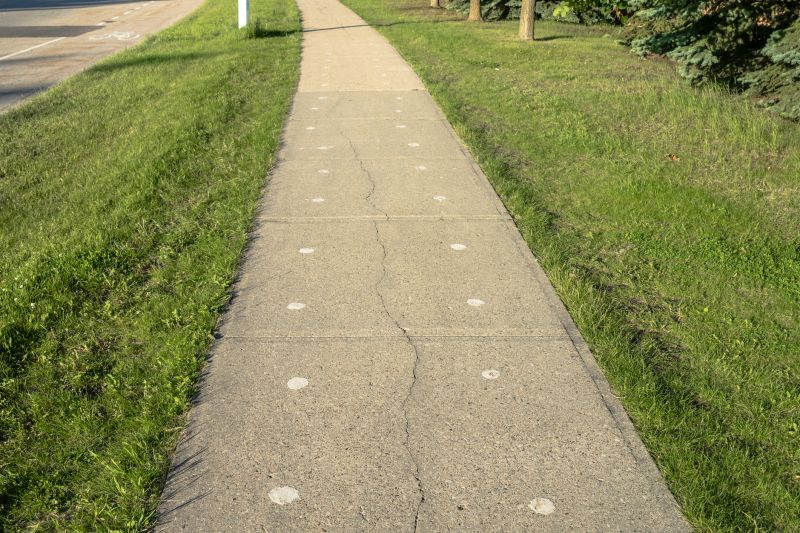Top Choices in Outdoor Concrete Leveling Products for Every Need
Find versatile and effective products tailored to various outdoor concrete leveling applications and project sizes.
 Outdoor concrete leveling products are essential tools for addressing uneven or sunken concrete surfaces around residential and commercial properties. These products help restore the integrity and appearance of driveways, walkways, patios, and other outdoor concrete structures. Proper leveling can improve safety by reducing trip hazards and can also enhance the overall aesthetic appeal of outdoor spaces. When selecting concrete leveling solutions, it is important to consider the specific requirements of the project, including the size of the area, the degree of unevenness, and the type of concrete involved.
Outdoor concrete leveling products are essential tools for addressing uneven or sunken concrete surfaces around residential and commercial properties. These products help restore the integrity and appearance of driveways, walkways, patios, and other outdoor concrete structures. Proper leveling can improve safety by reducing trip hazards and can also enhance the overall aesthetic appeal of outdoor spaces. When selecting concrete leveling solutions, it is important to consider the specific requirements of the project, including the size of the area, the degree of unevenness, and the type of concrete involved.
Top Overall Option
Polyurethane Foam Lifting System
A polyurethane foam lifting system is a versatile solution for addressing uneven concrete slabs. It involves injecting expanding foam beneath the surface to lift and stabilize sunken areas with minimal disruption. This method is often favored for its quick application, reduced mess, and ability to lift concrete with precision. Suitable for various outdoor surfaces, it provides a non-invasive approach to leveling and can be used for small cracks or large slabs alike.
Types of Products For Outdoor Concrete Levelings
Self-Leveling Concrete Patches
Pre-mixed compounds designed to fill and level uneven surfaces, suitable for small to medium repairs.
Polyurethane Foam Injection Kits
Expandable foam systems that lift sunken slabs with minimal excavation, ideal for uneven driveways and patios.
Cement-Based Repair Mortars
Durable mortars used to fill cracks and rebuild sections of concrete, providing structural stability.
Liquid Leveling Compounds
Flowable solutions that can be poured or troweled onto surfaces to create a smooth, level finish.
Concrete Resurfacing Products
Overlay materials that restore the surface appearance and levelness of aged or damaged concrete.
Crack Fillers and Sealants
Products designed to fill and seal cracks, preventing further damage and improving surface integrity.
Fast-Setting Repair Mixes
Quick-curing compounds suitable for urgent repairs and small patches.
Epoxy Injection Systems
Used for structural repairs and crack stabilization, providing strong adhesion and durability.
Slab Jacking Materials
Materials used for raising and leveling sunken concrete slabs through injection or grouting methods.
Polymer Modified Concrete Mixes
Enhanced mixes that offer increased flexibility and adhesion for outdoor repairs.
Outdoor Concrete Repair Kits
All-in-one kits that include multiple components for comprehensive repair projects.
Grouting Products for Foundations
Specialized grouts used to stabilize and level foundation slabs and large surfaces.
Popular Choices
Widely used for lifting sunken slabs, these kits are popular for their ease of use and effectiveness.
Commonly chosen for small repairs, these patches provide a quick fix for uneven surfaces.
Popular for sealing cracks and preventing water intrusion, extending the life of concrete surfaces.
Favored for their smooth finish and ability to create level surfaces with minimal effort.
Chosen for revitalizing aged or damaged concrete with a fresh, even appearance.
Popular for quick repairs, these mixes cure rapidly and are suitable for urgent fixes.
Often used for structural crack repairs, providing strong bonds and long-lasting results.
Preferred for raising and leveling slabs with minimal excavation, especially in commercial settings.
Selected for their enhanced flexibility and adhesion for outdoor applications.
Many outdoor concrete leveling products are designed for DIY use, offering user-friendly features and straightforward application methods. These products often include self-leveling compounds, patching mixes, and specialized fillers that can be applied with simple tools. For larger or more complex projects, professional-grade products or services may be recommended to achieve optimal results. Regardless of the product chosen, proper surface preparation, including cleaning and removing loose debris, is crucial for effective application.
In addition to traditional leveling compounds, there are also innovative solutions such as polyurethane foam injections, which can lift sunken slabs with minimal disruption. These foams expand beneath the surface to raise the concrete to its proper level while providing stability. Other options include cement-based patching compounds that fill cracks and gaps, restoring the surface's smoothness and durability. Selecting the right product often depends on factors like the size of the area, the extent of unevenness, and the desired longevity of the repair.
Overall, investing in the right outdoor concrete leveling products can make a significant difference in maintaining safe and attractive outdoor spaces. Understanding the different types and their applications can help homeowners and contractors choose the most suitable options for their specific needs. Proper application and maintenance will ensure the longevity of the repair and the continued safety of the area.
Key Buying Considerations
- Type of repair needed: surface patching, lifting, or crack sealing.
- Size of the area requiring leveling or repair.
- Degree of unevenness or sinking of the concrete surface.
- Compatibility of the product with outdoor conditions and weather exposure.
- Ease of application and whether DIY installation is feasible.
- Curing time and how it fits into project timelines.
- Durability and resistance to future cracking or shifting.
- Preparation requirements, such as cleaning or surface roughening.
- Compatibility with existing concrete materials.
- Environmental conditions during application, such as temperature and humidity.
- Cost considerations and budget constraints.
- Availability of professional support or technical guidance.
- Long-term maintenance needs for the repaired surface.
- Potential need for additional reinforcement or structural support.
- User reviews and product reputation for reliability.
This page contains affiliate links. We may earn a commission from qualifying purchases, which helps support our content and recommendations.
